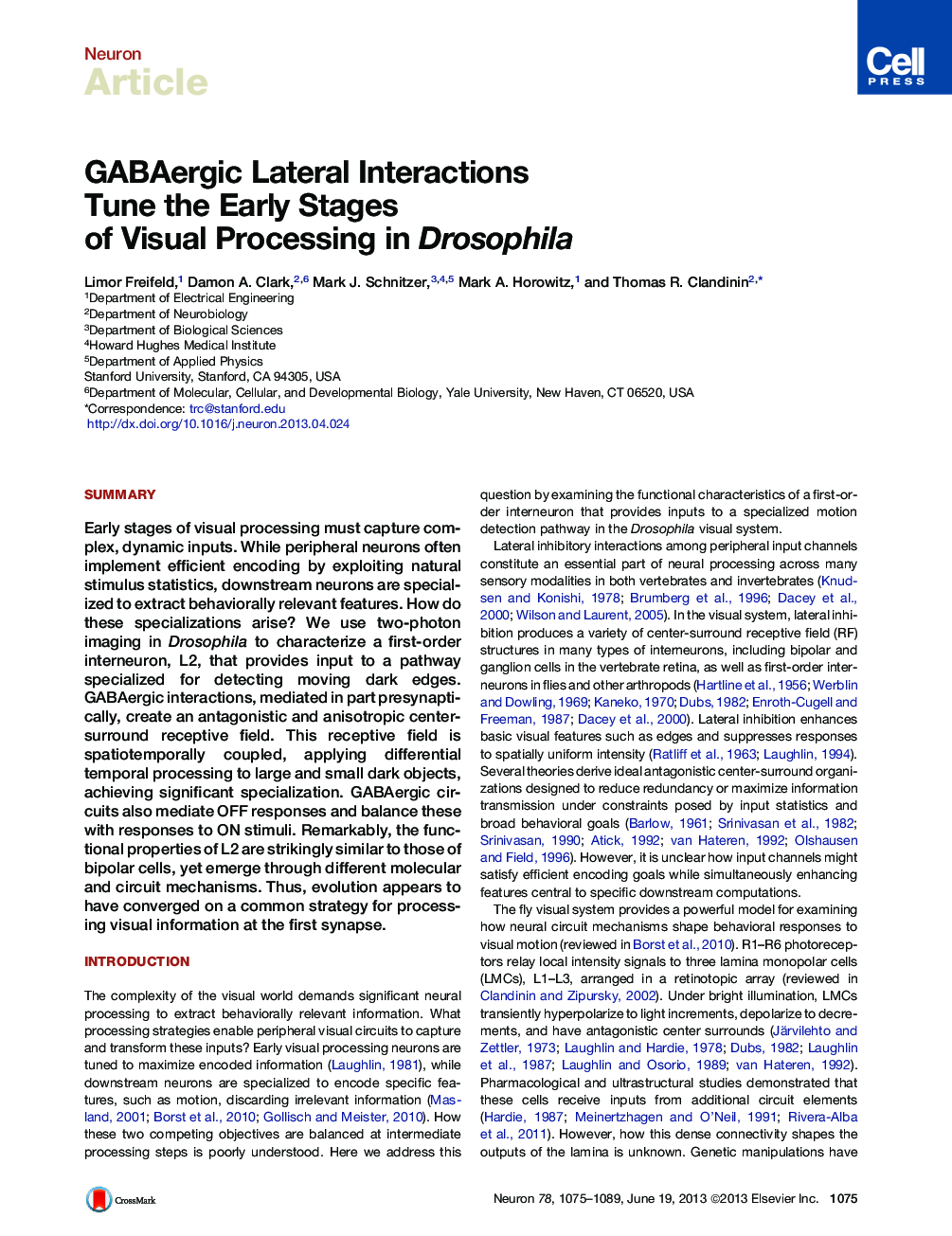| Article ID | Journal | Published Year | Pages | File Type |
|---|---|---|---|---|
| 4321160 | Neuron | 2013 | 15 Pages |
•L2 cells have an antagonistic and spatiotemporally coupled center-surround RF•Presynaptic GABAergic antagonism gives rise to an anisotropic surround•GABAergic circuitry mediates OFF responses and balances them with ON responses•L2 and vertebrate retinal bipolar cells have striking functional similarities
SummaryEarly stages of visual processing must capture complex, dynamic inputs. While peripheral neurons often implement efficient encoding by exploiting natural stimulus statistics, downstream neurons are specialized to extract behaviorally relevant features. How do these specializations arise? We use two-photon imaging in Drosophila to characterize a first-order interneuron, L2, that provides input to a pathway specialized for detecting moving dark edges. GABAergic interactions, mediated in part presynaptically, create an antagonistic and anisotropic center-surround receptive field. This receptive field is spatiotemporally coupled, applying differential temporal processing to large and small dark objects, achieving significant specialization. GABAergic circuits also mediate OFF responses and balance these with responses to ON stimuli. Remarkably, the functional properties of L2 are strikingly similar to those of bipolar cells, yet emerge through different molecular and circuit mechanisms. Thus, evolution appears to have converged on a common strategy for processing visual information at the first synapse.
